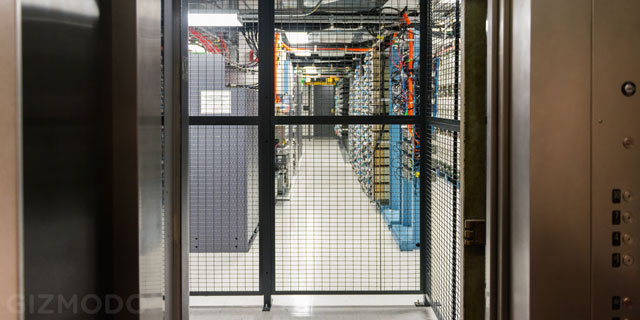As Hurricane Sandy revealed almost two years ago, New York’s 100-year-old subway is not a modern and robust system. In fact, compared to other cities, it’s downright dirty, unpredictable and technologically behind. But the Metro Transit Authority is currently dragging it into the future — and I got the chance to go behind the scenes of the MTA’s mission.
Modernising NYC’s subway will take place mainly behind the scenes. But one major way the subway will change for commuters is currently in progress in a secret location in NYC, where Nathan Cornish — the head of Radio Frequency Engineering for Transit Wireless — recently gave me a tour of the the effort to bring cell service underground.
A City Within a City
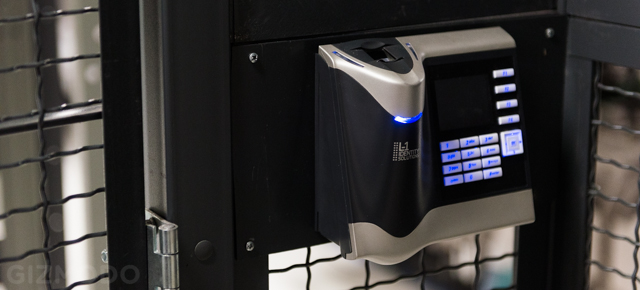
It all starts in a somewhat secret location called the Base Station Hotel. An elevator opens up to a caged-in entrance passable only by fingerprint scanner.
Fascinatingly, the four major US cellular carriers must all participate and supply their own hardware to bring their customers service in the subway. From the vantage of the cage, you can see tons of communications, fibre, and radio equipment from Verizon, AT&T, Sprint, and T-Mobile.
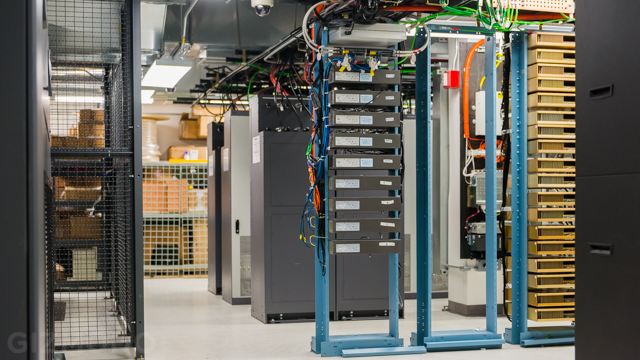
The Base Station Hotel is one of three pieces that make up the network that brings the subway online. Inside are aisles of equipment, massive air conditioners, and several power back up systems. Each carrier’s equipment is grouped into a specific area based on how much gear is needed. A lot of it is made by the folks over at Alcatel-Lucent, while the rest is made by Ericsson and other assorted manufacturers.
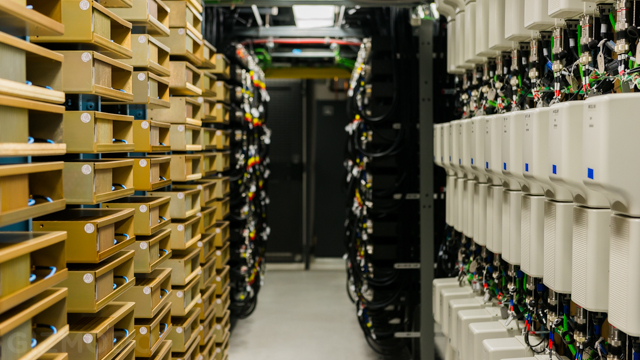
All that hardware takes up a lot of space. But 100 years ago, the engineers who laid out the underground subway map weren’t thinking about housing cellular and wireless equipment. In more modern metro systems, there are specific rooms devoted to housing this kind of equipment. But since the NYC subway has none of those, all this gear has to live in an undisclosed location in Manhattan.
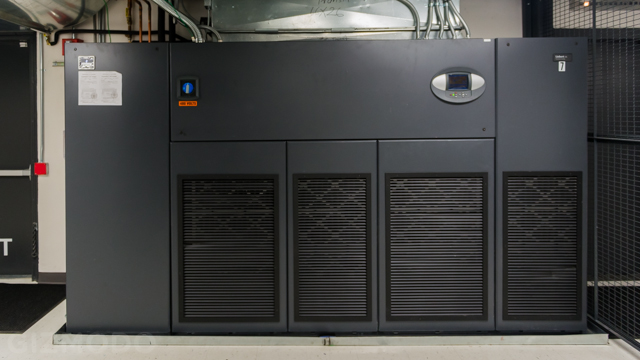
And that undisclosed location is big.
The building required a massive overhaul before it was fit to let the equipment it houses perform its job. A shaft down the center of the building had to be installed to house the fibre; huge air conditioning units needed to be in place; the whole structure had to be rewired in order to supply the juice needed to run these systems. And a million other, smaller adjustments needed to be made before things could get cooking. In some ways, this building is a city unto itself, akin to a datacentre.
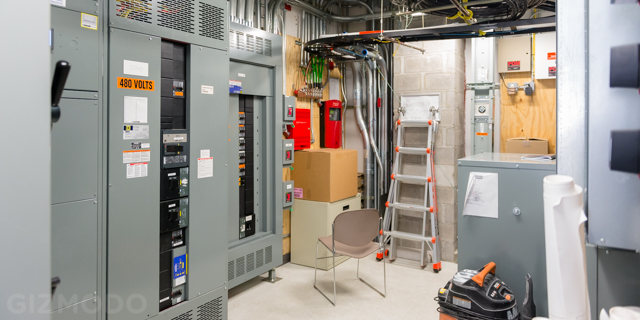
But the construction didn’t stop there. Nathan took me to the roof, where even more work had to be done. A skylight had to be removed to cut out the possibility of a water leak. AC intakes had to be installed alongside a massive backup generator.
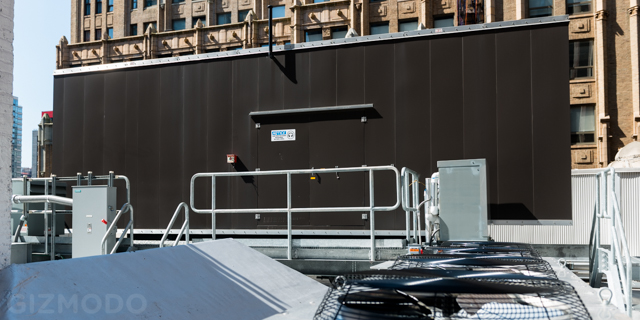
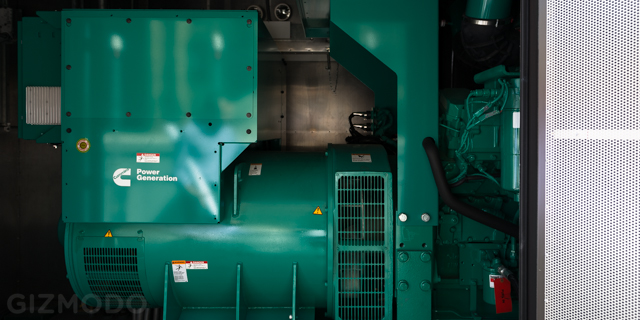
And what about the power?
Housed in a giant sound-dampening box, the Base Station Hotel’s massive generator could power 700 homes if the grid were to go down. But instead, its job is to power all the subway’s cellular equipment in case of a power outage. Some carriers opt out in favour of having their own back up systems, but this generator will power all the hardware their equipment hooks up to.
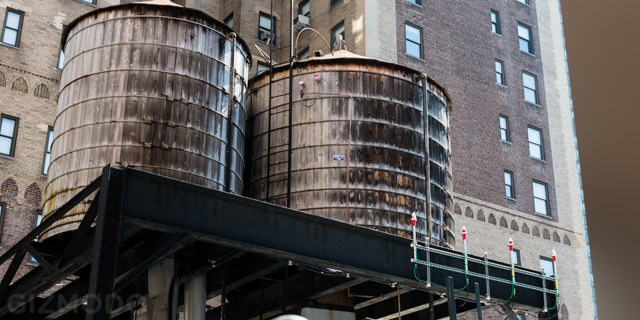
GPS antennas from different service providers decorate areas of the roof as well. These are necessary to synchronise LTE service, using geolocation and timing.
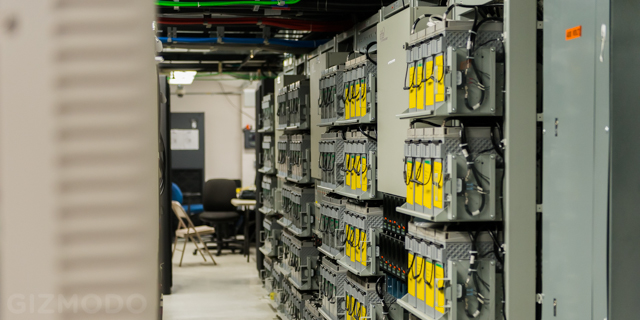
Back downstairs, Nathan gave me the full start-to-finish on where the service originates and how it’s being brought down into your train station. One section of the room is dedicated solely to one carrier’s battery backup system, which takes the place of the rooftop generator. Each rack pictured above holds boxes of batteries.
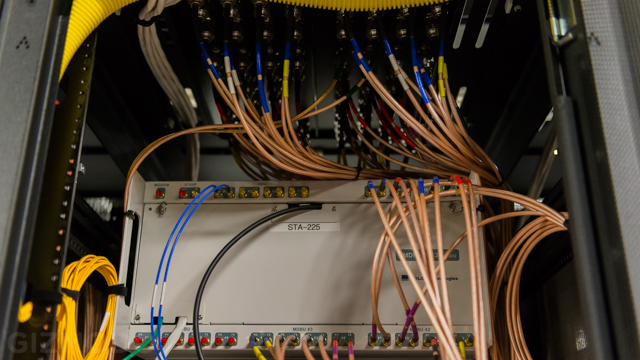
Each carrier gets routed by fibre in the ceiling into something called the Radio Frequency Headend. It basically consolidates all the carriers’s wires down into just a few fibre cables.
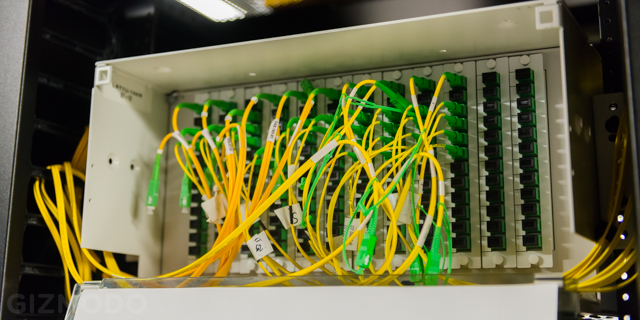
Once the carriers are consolidated, they’re routed out through fibre again to a panel that connects to a Remote Fibre Node — down at the subway station, where you access the system from your phone.
If You Want to See the Fibre, Just Look Up
But there are two more pieces to this puzzle beyond the Base Station Hotel. First, there’s the in-between fibre and infrastructure — this is called the “Inside Plant.” This part is largely invisible, consisting of little more than the fibre and cables that run through the building and into the ground. These wind up at one of many installations that actually bring wireless connectivity to your station — the “Outside Plant.” Nathan brought me to a station to show me what one looked like.
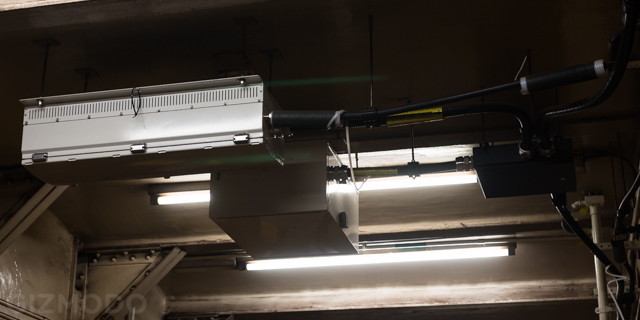
Each station has a Remote Fibre Node that receives the cables originating from the Base Station Hotel. The network inside the subway also has a backup power system. And again, because of this ageing system’s space constraints, the cabling had to be external. And this fibre needs to be carefully protected — these nodes and their wires are covered in outdoor-quality protective equipment.
Why? Even though a subway station might look filthy, the MTA puts a lot of energy (and truckloads of money) towards keeping them from getting any more dirty. This entails having employees blasting the station with power washers on a regular basis. These employees just blast everything in sight — including the equipment. And these electronics need to be able to hold up under the pressure.
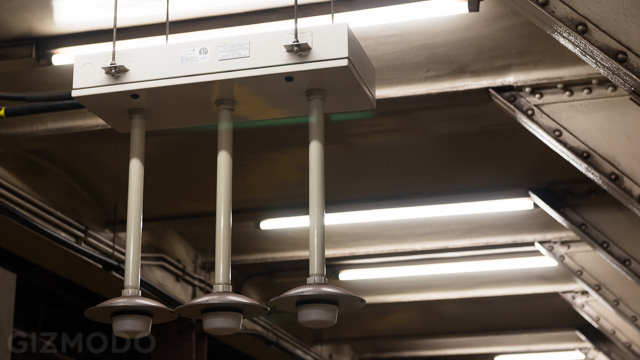
The fibre runs into an antenna that looks like a little lightless light fixture, which hangs from the ceiling throughout the station. Guts that support all the carriers are inside.
And when the switch is flipped? All of a sudden, your phone has service.
The biggest challenge in bringing NYC’s metro online is that it is massive — and that runs 24/7/365. In larger stations, where uptown and downtown service is separated into two platforms, rigging the fibre requires workers to get onto the tracks. This means MTA people needs to be inside the tunnel, which slows down trains while this installation happens over the course of two days.
A Long, Slow Job
There are seven phases to the subway service deployment. Transit Wireless is in the middle of phase two — they have built 47 stations so far, and should be finished with phase seven by 2017, with a total of 278 stations completed.
All the equipment necessary to wire NYC can’t fit inside just one location, either. The next few stations to go online are in Queens, so a new Base Station will also be located nearby. Having multiple locations also provides redundancy for the network. In the end, two Base Station Hotels will be built in Manhattan, two in Brooklyn, one in Queens, and one in the Bronx.
As far as having service in the tunnels? It’s still a long way off. It’s not in Transit Wireless’ current contract, although they are discussing ways it could be done. For stations with straight track between them, there are ways to increase the signal between connecting stations, but in situations where the tunnel bends and curves it gets more complicated: A cable would need to run down the center of the tunnel where the subway car windows pass. Subway service would need to stop and resume for these adjustments — not to mention requiring a trainload of man hours.
So in the end, although so many modern subways have system-wide cell service, the scale of work it would take to install it NYC raises the question of if it’s even worth it. However, potential advancements in radio technology could allow for better, less complicated solution in the years to come. Until then, NYC’s subway cars will go without service — another charming eccentricity in a city already full of them.
Thanks to the MTA and Transit Wireless for the visit.
